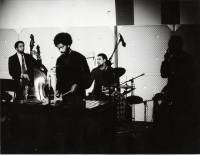search:common lisp case相關網頁資料
common lisp case的相關文章
common lisp case的相關商品
瀏覽:340
日期:2025-12-12
In this chapter, we will learn how to make decisions using Common LISP ....
CASE is a Common LISP macro that implements multiple test-consequent
clauses....
瀏覽:960
日期:2025-12-11
I'm trying to use a case statement to make some code more readable. ....
Common Lisp expects for CASE the item to test to be an atom or a list ......
瀏覽:1109
日期:2025-12-14
You don't need to quote the symbols in CASE . Symbols in CASE clauses are not
evaluated. (case tile-type (wall ...) (door ...)) WALL and DOOR are ......
瀏覽:1201
日期:2025-12-13
By default the reader in CL is case converting, all escaped characters get turned
into uppercase. You can customize this behavior with readtable-case ......
瀏覽:924
日期:2025-12-08
Common Lisp has a couple of functions to control the case of a string. * (string-
upcase "cool") "COOL" * (string-upcase "Cool") ......
瀏覽:1497
日期:2025-12-11
22 Jun 2013 ... A switch is spelled CASE in Lisp (see below).] ... Also, since switch statements
are so common, they tend not to be just syntactic sugar, but ......
瀏覽:810
日期:2025-12-08
CLISP supports programs written with case sensitive symbols. ... However, unlike
some commercial Common Lisp implementations, CLISP allows both kinds of ......
瀏覽:452
日期:2025-12-08
These conditional forms augment Emacs Lisp's simple if , and , or , and cond
forms. — Macro: ... If no clause matches, the cl-case form returns nil . The clauses
......


































![露網鏡頭PLUS [陽光妹交作業]叫我時尚拍照達人](https://www.iarticlesnet.com/pub/img/article/23211/1403929361771_xs.jpg)



